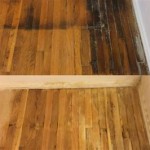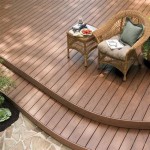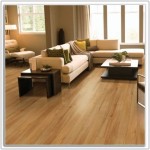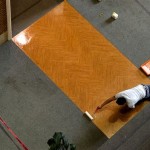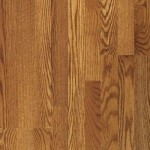Rustic Stone Flooring Texture: A Comprehensive Guide
Rustic stone flooring texture evokes a sense of timelessness and natural beauty, making it a popular choice for homeowners seeking to add character and warmth to their interiors. This aesthetic appeals to those who appreciate the raw, unrefined appearance of natural materials and desire a floor that tells a story. The texture itself is far from uniform, characterized by variations in color, depth, and surface imperfections that contribute to its unique charm. Understanding the nuances of rustic stone flooring texture is crucial for selecting the right material and achieving the desired aesthetic for a given space.
The term "rustic" in this context refers to the visual and tactile qualities that suggest age, weathering, and a connection to the earth. Unlike polished and refined surfaces, rustic stone flooring embraces irregularities and celebrates the inherent imperfections of the stone. This can include variations in color from subtle earth tones to bolder hues, natural crevices and pits, and an overall sense of depth and variation that is not often found in more modern or manufactured flooring options. The texture plays a significant role in establishing the overall atmosphere of a room, contributing to a feeling of warmth, comfort, and connection to the natural world.
Various types of stone are used to create rustic flooring textures, each offering a unique aesthetic and set of characteristics. Slate, limestone, travertine, and flagstone are commonly employed, and the specific type chosen significantly influences the final appearance and performance of the floor. The way the stone is cut and finished also contributes to the texture, with options ranging from honed and filled to tumbled and chiseled. The suitability of each type depends on factors such as the level of foot traffic, the intended use of the space, and the desired maintenance requirements.
Understanding the Characteristics of Different Stone Types
Different stone types offer distinct textural characteristics that influence the overall appearance and feel of the flooring. Slate, for example, is known for its natural cleft texture, which results from the way it naturally splits along its layers. This inherent layering creates a slightly uneven surface with subtle variations in height, adding depth and visual interest. The color palette of slate can range from dark grays and blacks to greens, purples, and rust tones, further enhancing its rustic appeal.
Limestone, on the other hand, offers a softer and more porous texture compared to slate. It often features subtle veining and fossil inclusions, which contribute to its natural character. Limestone can be honed to a smooth, matte finish, or left with a more rustic, tumbled edge that emphasizes its natural imperfections. The color palette of limestone is typically warmer, with variations of beige, cream, and light gray.
Travertine is characterized by its distinctive pitted surface, which results from the natural formation process of the stone. These voids and irregularities add to its rustic texture and create a unique visual interest. Travertine is often filled with a grout or resin to create a smoother surface, but unfilled options are also available for a more authentic rustic look. The color palette of travertine is typically warm and earthy, with variations of beige, brown, and ivory.
Flagstone is a generic term referring to sedimentary rocks that can be split into flat slabs. It often exhibits a highly irregular surface with varying thicknesses and textures. Flagstone is commonly used for outdoor patios and walkways, but it can also be used indoors to create a rustic and natural flooring surface. The color palette of flagstone is highly variable, depending on the specific type of rock used, but it often includes shades of brown, red, gray, and tan.
Impact of Stone Finishing Techniques on Texture
The way stone is finished significantly impacts its final texture and appearance. Honing, tumbling, chiseling, and antiquing are just a few of the techniques used to achieve different rustic looks. Each technique alters the surface in a way that enhances or diminishes the natural characteristics of the stone.
Honing refers to a process that grinds the stone to a smooth, matte finish. This technique removes any sharp edges or imperfections, resulting in a more refined and consistent texture. While honing can create a more comfortable walking surface, it also reduces the natural roughness and character of the stone. Honed finishes are often used on limestone and travertine to create a subtle rustic look that is both elegant and inviting.
Tumbling involves placing the stone in a rotating drum with abrasive materials. This process rounds the edges and softens the surface, creating a worn and aged appearance. Tumbling enhances the natural texture of the stone by accentuating any existing imperfections. Tumbled finishes are popular for creating a rustic and vintage look, particularly with materials like limestone and travertine.
Chiseling involves manually creating a textured surface using a chisel and hammer. This technique can be used to create a variety of patterns and textures, from subtle grooves to more pronounced indentations. Chiseling adds a handcrafted element to the stone and enhances its rustic appeal. Chiseled finishes are often used on flagstone and slate to create a highly textured and visually striking flooring surface.
Antiquing involves a combination of techniques designed to replicate the look of aged stone. This can include distressing the surface with brushes or chemicals, adding a patina, or applying a sealant that emphasizes the natural imperfections of the stone. Antiqued finishes are ideal for creating a rustic and historical look, particularly in older homes or buildings.
Practical Considerations for Rustic Stone Flooring
Beyond aesthetics, practical considerations play a vital role in selecting the appropriate rustic stone flooring for a given space. Factors such as durability, porosity, slip resistance, and maintenance requirements should be carefully evaluated. The inherent properties of different stone types and the chosen finishing techniques influence these factors.
Durability is a key consideration, especially in high-traffic areas. Harder stones like slate and granite are more resistant to scratches and wear than softer stones like limestone and travertine. The thickness of the stone also influences its durability, with thicker slabs generally being more resistant to cracking and chipping.
Porosity refers to the stone's ability to absorb moisture and stains. More porous stones like limestone and travertine may require sealing to prevent staining and water damage. Sealing creates a protective barrier that helps repel liquids and makes the stone easier to clean. The frequency of sealing depends on the type of stone, the level of foot traffic, and the potential for spills.
Slip resistance is an important safety consideration, especially in areas that are prone to moisture, such as bathrooms and kitchens. Textured surfaces generally offer better slip resistance than smooth surfaces. Stones with a natural cleft or tumbled finish provide increased traction compared to honed or polished finishes. The use of area rugs or mats can further enhance slip resistance in these areas.
Maintenance requirements vary depending on the type of stone and the chosen finish. Regular sweeping or vacuuming is necessary to remove dirt and debris. Damp mopping with a pH-neutral cleaner is recommended for most stone floors. Harsh chemicals and abrasive cleaners should be avoided, as they can damage the surface. Periodic sealing may be required to maintain the stone's protective barrier and prevent staining. The specific maintenance requirements should be discussed with the stone supplier or installer to ensure proper care and longevity of the flooring.
In conclusion, rustic stone flooring texture offers a unique blend of natural beauty, timeless appeal, and practical functionality. By understanding the characteristics of different stone types, the impact of finishing techniques, and the importance of practical considerations, homeowners can select the perfect rustic stone flooring to enhance their living spaces and create a lasting impression.

Rustic Stone Grey Porcelain Tile Realstone Systems

Rustic Stone Floor Texture Stained Background For Design And Composing Stock Photo Adobe

Hot Natural Stone Texture Look Glazed Rustic Wall And Floor Tile China Foshan Made In Com

Rustic Stone White Porcelain Tile Realstone Systems

Stone Texture Stain Resistant Glazed Rustic Wall And Floor Tiles With Good Quality China Tile Foshan Made In Com

Stone Tile Texture S Free On Freepik

Marble Texture Background Natural Breccia Tiles For Ceramic Wall And Floor Stone Digital Rustic Rough Matt Granite Tile Stock 写真

9 Stone Floor Textures Psd Vector Eps Format

China Chinese Professional Textured Stone Wall Tile Sandstone Porcelian Rustic Floor Non Slip Ceramic Cerarock Manufacture And Factory Ceramics

Rustic Stone Taupe Porcelain Tile Realstone Systems
Related Posts

